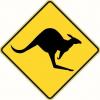To David's point (but not intended to contrast Dereks) more and more I'm seeing how many of the only moderately hard North American hardwoods do indeed look much better using a standard angle and a cap iron.
Once recent example that really jumped out at me occurred at the LN show I attended this past weekend. I was watching one of the demonstrators plane some QS Sycamore. Its an interesting wood in that it not all that hard (770 janka) but has interlocked grain. I love sycamore as its actually quite easy to plane , generally a pleasure to work with handtools with grain direction that is easy to read and pretty consistent. BUT if/when you do hit a reversal or misread the grain it will tearout fairly badly. Anyway, I was watching the demonstrator show off a 55 degree frog on this stuff as an example of how well the higher angle works to prevent tearout. Well the surface was indeed tearout free but it looked like it had been hit with a dull scraper...just very dull and fuzzy. No disrespect intended to the demonstrator who was very friendly and knowledgeable...but it just wasn't the ideal way attack that particular wood.
All that is to say that I'm finding increasing benefit to using a capiron in things like curly cherry, QS syscamore, or walnut that has a bit of figure, where a a high angle just isn't the ideal.
IF I was working mostly really hardwoods, I might be more inclined to use high angles. In something like hard figured maple, my LA Jack with 55 degree included angle does beautiful work, and the rock solid simplicity of the thick single iron does make it a pleasure to use. Its rare that actually use it that way, but when I do, I definitely understand the love people have for a high angle and a single iron.
Of course, if one is going to sand afterwards, than the dullness or sheen of the surface is a moot point. While I very often do follow planing with a bit of 220 and it is often moot to me, I'm just more comfortable with BD planes. And I love that fact that I can go from planing pine to curly maple using a standard angle and cap iron without compromise if an unsanded surface is desired.
Last edited by Chris Griggs; 10-09-2013 at 9:24 AM.
Reason: typos
Woodworking is terrific for keeping in shape, but it's also a deadly serious killing system...




 Reply With Quote
Reply With Quote



 I'm still going to make more infills, but they will be double iron and either common or norris type pitch. Even went so far as to find one of the old ulmia double iron rabbet planes.
I'm still going to make more infills, but they will be double iron and either common or norris type pitch. Even went so far as to find one of the old ulmia double iron rabbet planes.







